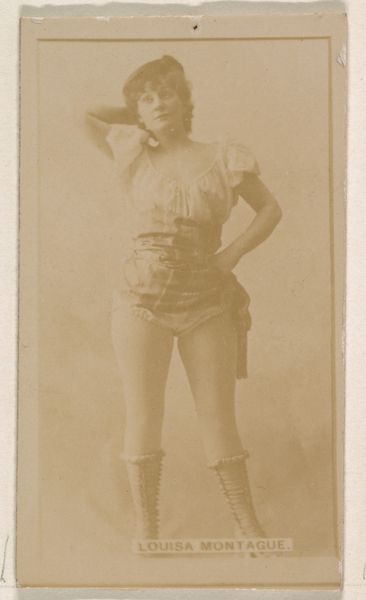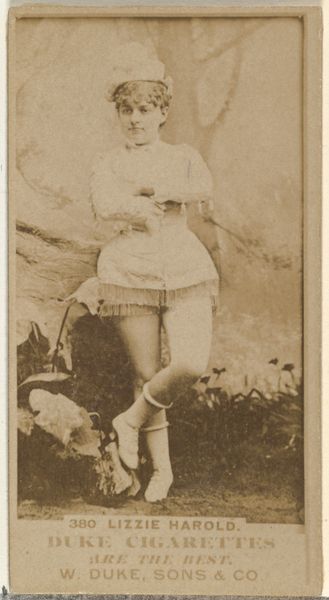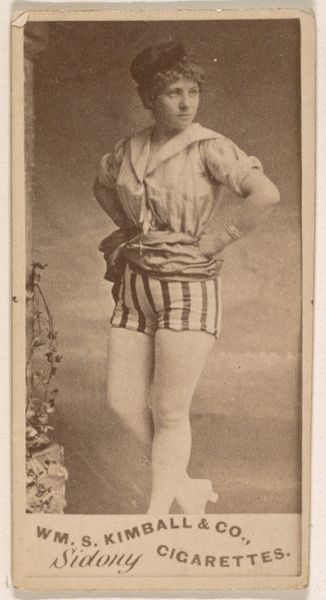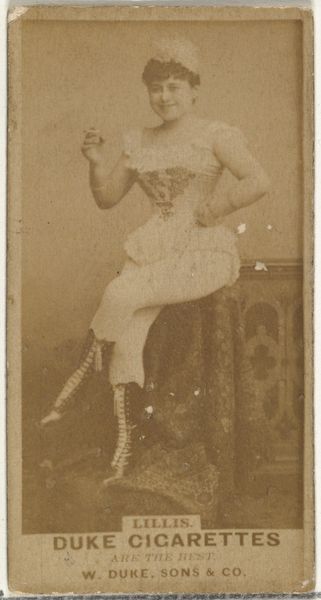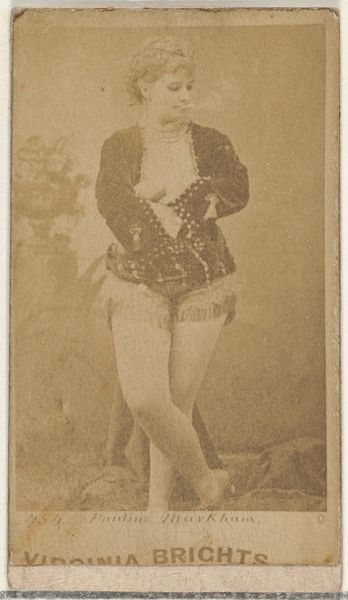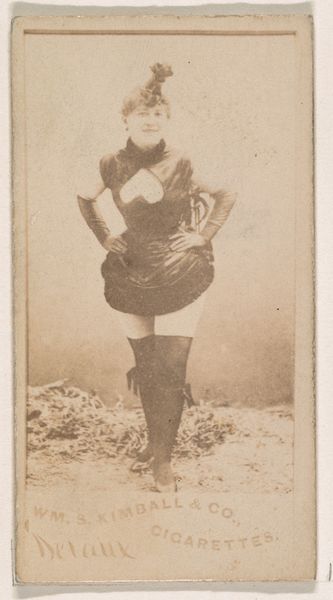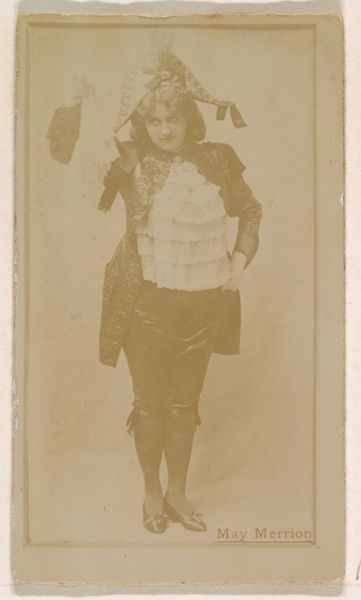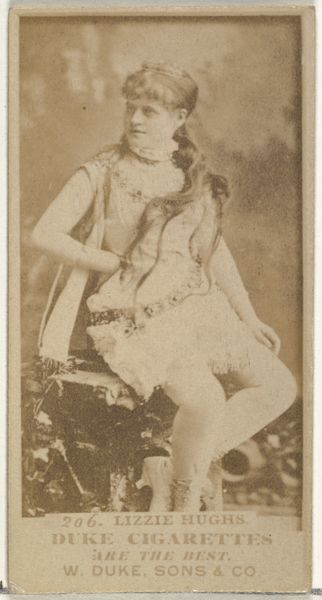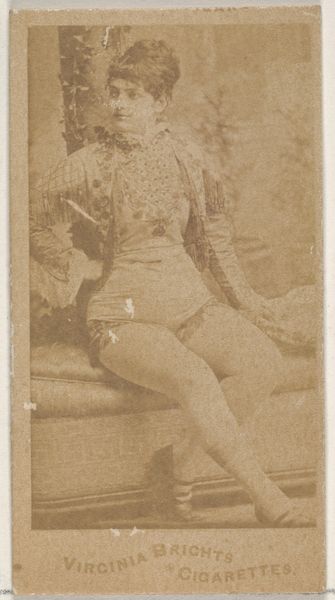
Card Number 147, Mlle. Rescalli, from the Actors and Actresses series (N145-6) issued by Duke Sons & Co. to promote Duke Cigarettes 1880s
0:00
0:00
Dimensions: Sheet: 2 11/16 × 1 3/8 in. (6.8 × 3.5 cm)
Copyright: Public Domain
Curator: This is card number 147 from the Actors and Actresses series (N145-6), published in the 1880s by W. Duke, Sons & Co. as a promotional item for Duke Cigarettes. It features Mlle. Rescalli, and while it is technically photography, it's executed in a manner clearly referencing ukiyo-e print aesthetics. Editor: The faded sepia tones lend it a strange intimacy, almost voyeuristic. And it seems a very thin material--something ephemeral rather than a grand artistic statement. Curator: Right. Think about the context of mass production here. These weren’t intended as high art. The use of photography mimicking printmaking traditions allowed for quicker, cheaper duplication and distribution on a huge scale to drive tobacco sales. We should consider how capitalist imperatives shape artistic expressions. Editor: Absolutely. Look at the materiality: flimsy card stock, probably coated with some kind of sealant to withstand handling. The cigarette company wasn’t selling artistry; they were selling a commodity. This card was a byproduct of that larger production. I also can't ignore how that impacted laborers—what conditions did they have producing these cards and the tobacco they pushed? Curator: And within this economic framework, how does the representation of Mlle. Rescalli fit? These cards acted as a kind of proto-pinup, sexualizing women for male consumption within the patriarchal structures of the era. It raises issues of commodification of the female body within both the performance industry and commercial advertising. The gaze here matters. Editor: The gaze is manufactured by capitalism, let's be real. By objectifying this performer's image on their flimsy medium, W. Duke, Sons, & Co. was selling access and fantasies connected to tobacco indulgence. Curator: By examining the card as both an artifact of capitalist culture and an instance of early mass media imagery, we understand the complex intersection of labor, commerce, and representation that influenced visual culture at the time. The intersection between capitalist endeavors and social perceptions created a potent image, indeed. Editor: I agree. It provides us with some disturbing commentary of commodity culture from production and material processes, to consumption practices and image-making of its historical moment. We need more than an artist's intention to gauge that impact.
Comments
No comments
Be the first to comment and join the conversation on the ultimate creative platform.
